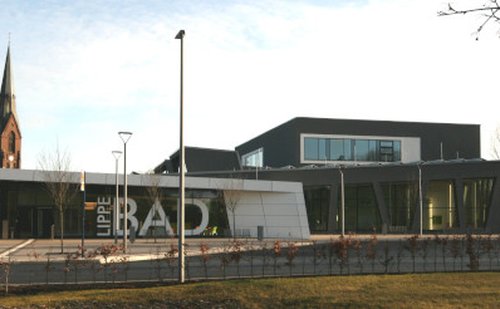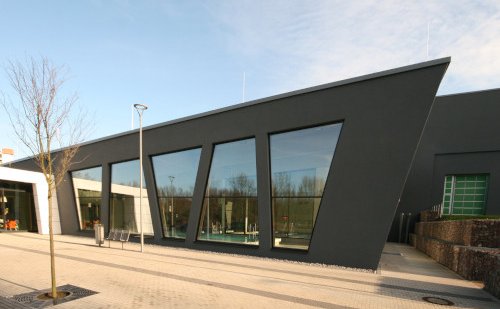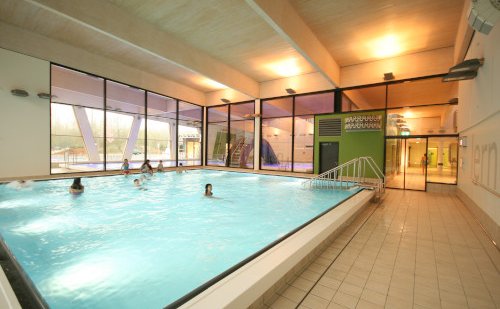Monitoring confirms efficiency of Passive House indoor pool
Details to be presented at International Passive House Conference in April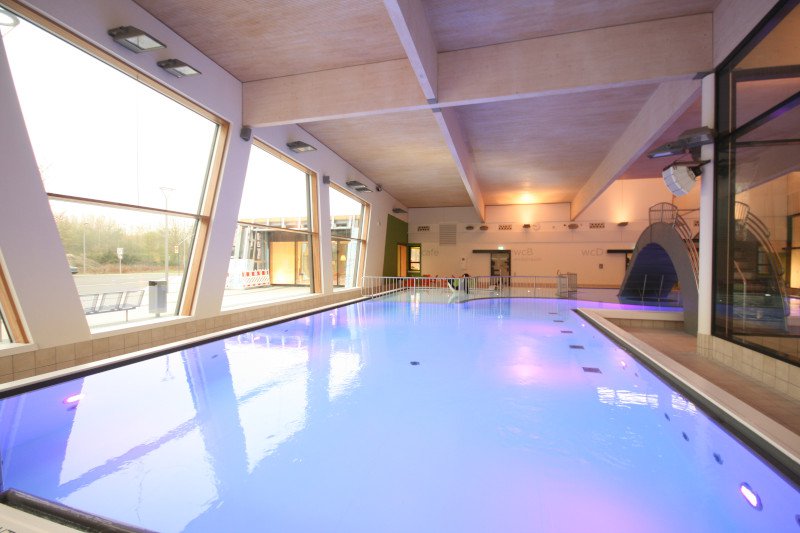
Darmstadt/Germany. The municipal swimming pool operator in the German city of Lünen ventured into unchartered terrain when it decided to build its indoor swimming pool to the Passive House Standard some years ago. This courageous step has now paid off, as the monitoring results show. The savings in terms of energy consumption, for heating as well as for electricity, are substantial compared with other swimming pools. The monitoring carried out by the Passive House Institute also shows that even further optimisation is possible during the building’s use. The beacon in Westphalia thus forms an outstanding basis for subsequent projects. Details on this will be presented by Jessica Grove-Smith from the Passive House Institute at the International Passive House Conference in Aachen, taking place from 25 - 26 April 2014. A general article on the energy efficiency in indoor swimming pools is now available online on Passipedia.
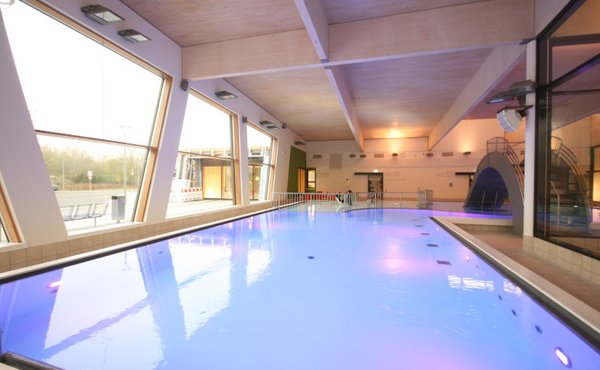
Swimming pools are extremely energy-intensive. Since many swimming pools in Germany were built in the 1970s, there is a great need for refurbishment on a broad scale. "There is a huge potential for savings – and the data from Lünen clearly shows that Passive House is a practicable solution here as well", explains Søren Peper, scientific advisor at the Passive House Institute. By building to the Passive House Standard, hundreds of towns and municipalities can reduce their running costs.
One of the key requisites for achieving the Passive House Standard, also in the case of indoor swimming pools, is a high quality building envelope, including the glazed areas. This not only helps significantly improve thermal comfort, but also allows for the pool to be operated at higher levels of indoor air humidity without causing condensation. Higher levels of indoor air humidity means reduced evaporation from the water surface, thus resulting in lower heating requirements for the pools.
Further savings can be achieved with the ventilation system. Heat losses are reduced by the use of high quality heat exchangers and adapted ventilation regulation. Smaller air quantities and the use of energy-saving devices provide for significantly lower consumption. Improved swimming pool technology with energy-efficient electrical systems and recycling of filter backwash are other key aspects in this concept.
Scientific monitoring of the project in Lünen started early on in the planning process. The Passive House Institute initially prepared a baseline study in 2009. The results were directly incorporated into the design and the most important findings of this process, including the first energy balances, were published in a report by the integrated design team. In September 2011, the "Lippe-Bad", a sports swimming facility with five separate pools, finally opened its doors. The energy flows inside the building were systematically recorded and analysed for over a year up until March 2013.
As it is often the case with complex new builds, the measurement period was marked by the adjustments of the buildings systems. Nevertheless, the values for the final energy consumption were still within the predicted range, based on a pool area of 850 m², heating requirement of 1189 kWh/(m² a) and electricity requirement of 718 kWh/(m² a). Almost 12 percent of the electricity consumption was generated through solar energy.
In the future, it will be possible to reduce the final energy demand for the "Lippe-Bad" even further, especially by means of the system for processing the filter backwash which was not in operation during most of the monitoring period. Further savings are expected with reference to the electricity demand. Like the "Bambados" swimming pool in Bamberg which was built at around the same time, this pilot project thus proves that even in the case of swimming pools the efficiency of the Passive House concept is a model for the future. The complete monitoring report and studies relating to the planning are also available on Passipedia.
